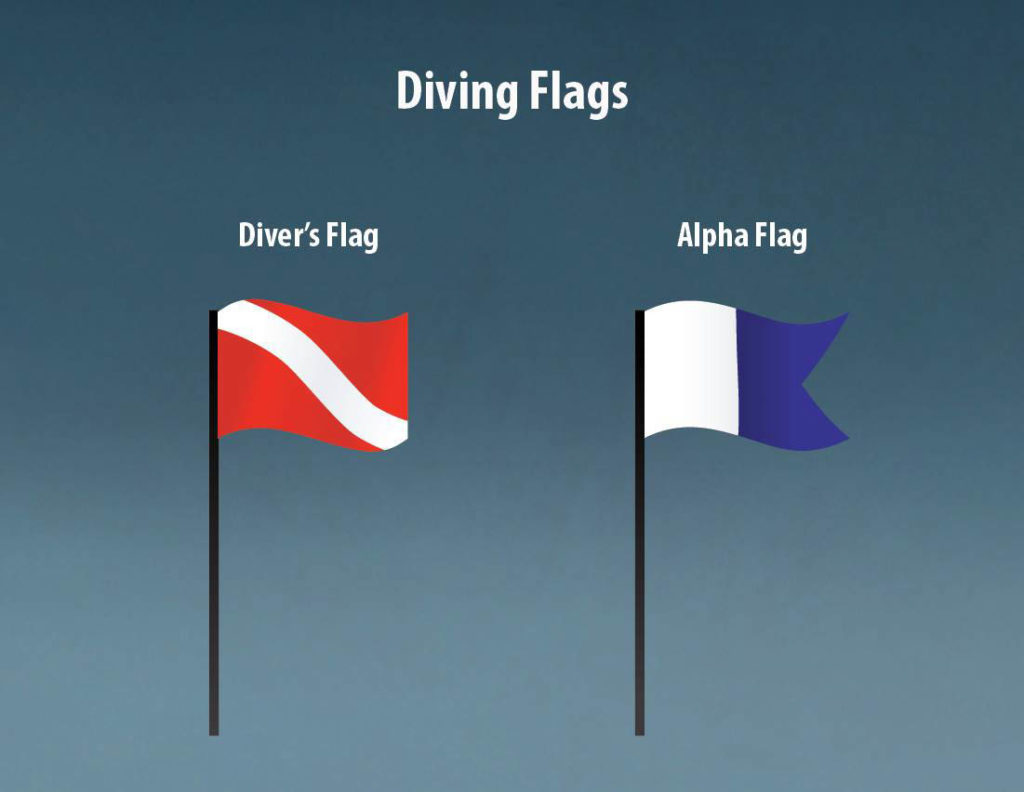The International Maritime Navigation Signals Code (IMNSC) is used to send communications between ships and between ships and ports. This code is made up of a series of flags in various forms and colours, each representing a letter of the international alphabet, as well as numerals ranging from 1 to 0. Furthermore, when each flag is bristled alone, it has a distinct message attached with it.
The national anthem “When the letter “A” is bristled alone on a boat, the word “Alpha” has the following meaning: “There is a submerged diver.” Keep a safe distance from me and drive slowly.” In 1961, the Inter-Governmental Maritime Consultative Organization (IMCO) approved the “Alpha” flag (blue with white) to signify diving activities in a revision of the International Code of Signals.
Because diving had become popular and its practice had escaped the strictly military domains during the Second World War, the IMCO wished to have a symbol with a worldwide connotation, recognized and used by all sailors.
Denzel James Dockery, a US Navy diver, decided to develop a flag that would signify the presence of divers in the water near to a boat in the late 1950s. To accomplish so, it used the flag “Bravo,” which represents the letter “B” in the international code of signals and, when raised alone, indicates that “I am loading, unloading, or transporting dangerous items,” mainly explosives. Dockery reasoned that a flag resembling the Bravo would deter boats from approaching the diver-infested area. Dockery instructed his wife Ruth to embroider a white stripe on the new dive flag to distinguish it from Bravo. Dockery chose to abandon the first design because it was horizontal, like the Austrian flag, and to avoid misunderstanding with a ship flying the Austrian flag (a country that, by the way, has no coast). They chose to set the strip vertically, like in the US Navy’s signal number 7, but they also deleted the second design to avoid confusion. Finally, Dockery and his wife decided to put the white stripe diagonally, and that was the winning design. Dockery began promoting his flag, and in 1956, Ted Nixon of the U.S. Divers firm purchased a quantity of flags from him and began distributing them across the country.
Nixon proposed a “official” flag for indicating the presence of divers near a vessel to Skin Diver magazine. Before Nixon’s letter, Skin Diver magazine editor Gene Parker urged readers to bring in their ideas for a badge or flag to notify boats that there were divers in the area and to keep away. His proposal was a flop because he did not receive a design, so he opted to write an article using the one Nixon had supplied him. Parker popularized the use of Dockery design after writing about the flag in Skin Diver. The argument was declared over in February 1958, when readers chose the flag “Michigan Divers” as the winner.
Denzel J. Dockery tried to have the flag officially recognized in Michigan (his state of birth) and later in the rest of the federal states of the United States. Dockery and Parker had to face a lawsuit with a Belmont dive shop owner, who wanted to patent the flag and charge for its manufacture and use. The court ruled that the flag was of public benefit and could not be used for profit. For this reason, two flags emerged in the early 1960s whose meaning is the same. The Alpha flag and the modified Dockery Bravo flag. The Alpha flag is officially recognized by the International Code of Signals, and its use is common in Europe, the United Kingdom and Commonwealth countries and Russia, but the Dockery flag is commonly used in the United States and its area of influence.
Story submitted by Norbert Pietkiewicz at AquaSub Scuba Diving Centre
Follow Norbert’s Dive Adventures On Facebook





